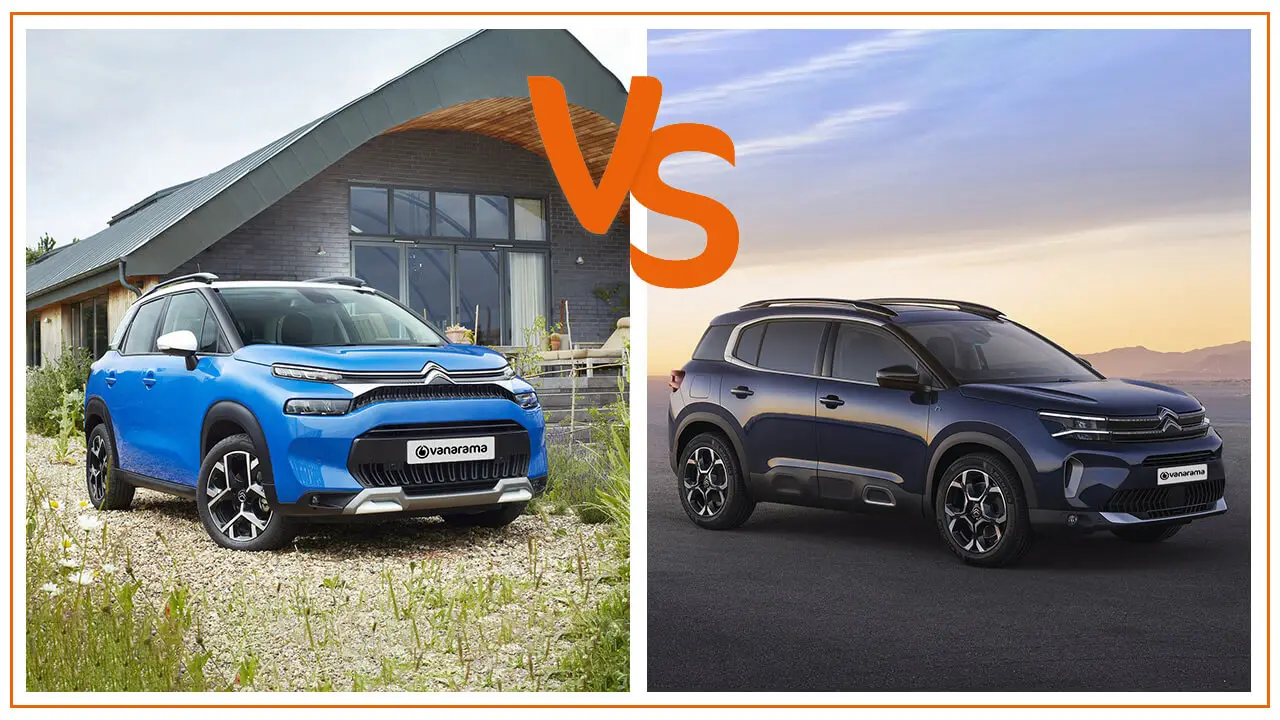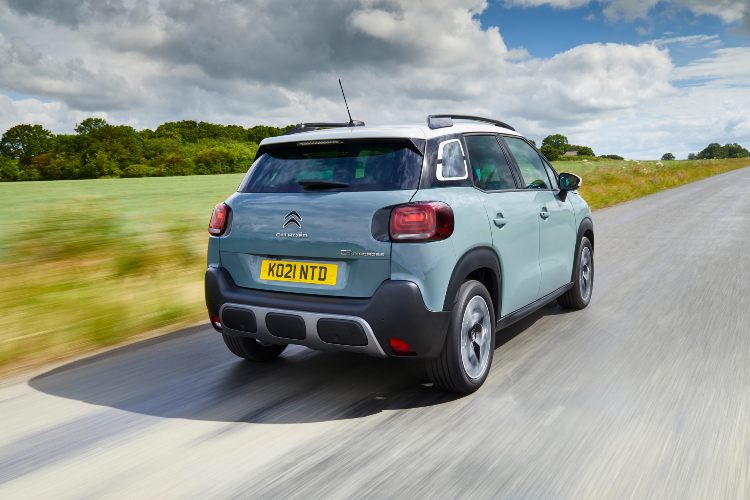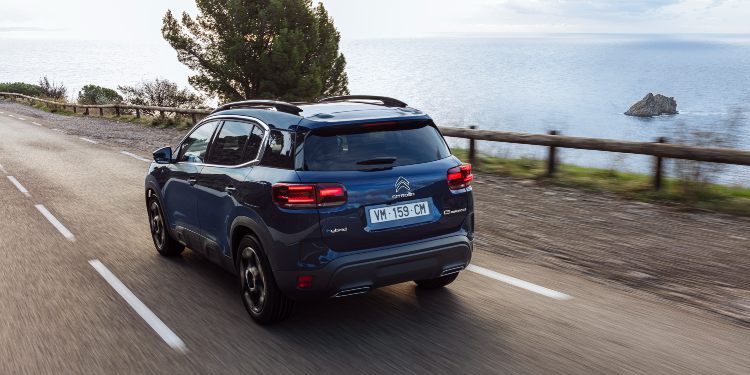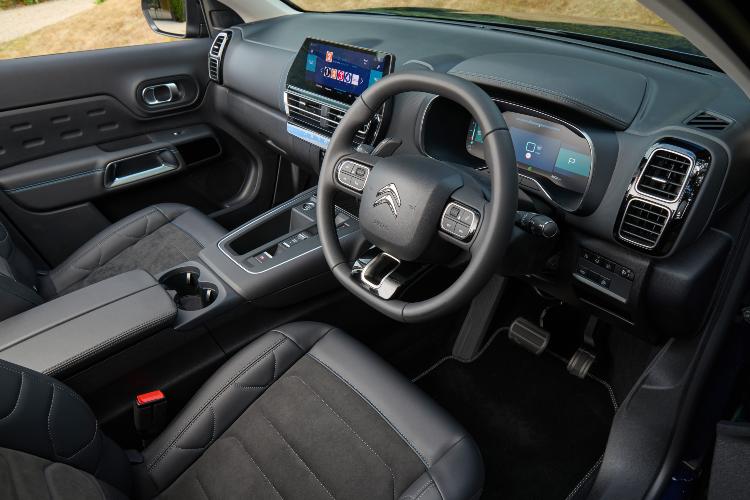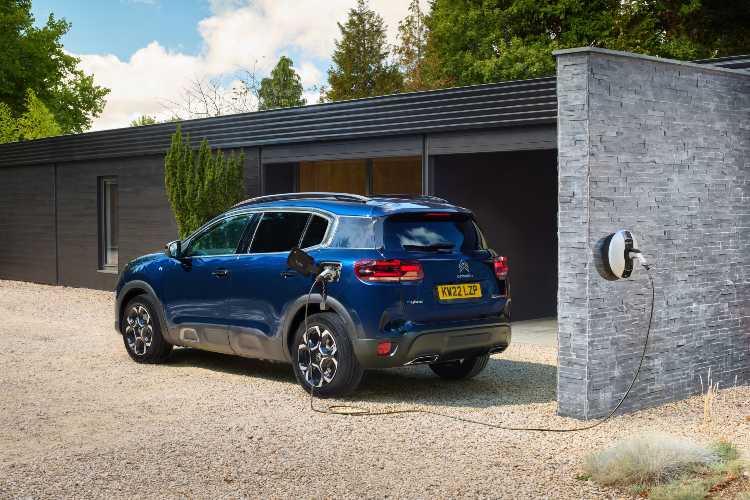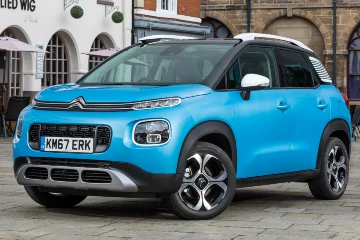We’ve got an in-house Citroen battle for you this time around, as the avant-garde French company’s two crossover SUVs – the C3 Aircross and the C5 Aircross – go head-to-head. But which one should you choose? Time to find out.
Design Differences
The obvious design difference here is that one of these two is considerably smaller than the other. The Citroen C3 Aircross is, as its alphanumeric name suggests, based upon the regular C3 supermini hatchback that the company makes, only it’s a bit taller, longer and wider. However, it has to remain compact as it competes in a class with vehicles the size of a Nissan Juke – whereas the C5 Aircross, while not having a ‘standard’ C5 model to be based upon (there is now a C5 X in the line-up, but this is classified as a grander car still than even the Aircross is), is nevertheless a larger, more family-oriented crossover-SUV that is about the size of a Nissan Qashqai or similar.
It's not just the sheer physical dimensions that differentiate these siblings, though. It’s the fact the C3 Aircross is deliberately aimed at a more youthful market, thanks to its particularly daring design details, the option of two bi-tone roof colours (white or black, if you don’t fancy a monotone car) and the availability of various graphic/sticker packs to zhuzh up the Citroen’s exterior. Check out our C3 Aircross colour guide for more details on colour combos. And, while it does have some visual nods to its supposed off-road leanings – such as silver ‘faux’ skid plates in the front and rear bumpers, plus roof rails up top – the C3 Aircross is devoid of the rugged-looking Airbump mouldings running along the side sills that the C5 Aircross possesses.
However, we’re not saying the C5 Aircross, facelifted at the start of 2022, is in any way a bad-looking machine – far from it. It’s simply that, as it is aimed at families and people who’ve settled down in life, the overall styling vibe is more sedate. You can still have a two tone body/roof combo but the only choice for the upper section here is black, while there are no graphical add-ons for the C5 Aircross, nor does it have a funky two step window line like the smaller Citroen crossover-SUV.
Inside, the C5 Aircross wins the battle on the design front. It has more in the way of advanced digital displays and clusters, while the quality of materials used is generally of a higher standard – and it all looks nicer too. The C3 Aircross’ cabin is cheerful enough, but it has been carefully built down to an affordable budget so it doesn’t quite have the aesthetic flourishes of its big brother’s passenger compartment.
Driving Differences
Again, the C3 Aircross feels like the vehicle which is aimed at a younger demographic, whereas the C5 Aircross gives off the air of being incredibly refined and assured. Neither of them is particularly good to drive in the corners, mainly because Citroen has – quite admirably – returned to its traditional company ethos of offering supreme ride comfort before all else. So both the C3 Aircross and the C5 Aircross, while having different driving characteristics to each other, put supple suspension at the top of their dynamic list.
This is great news for daily-driving duties, which is what the vast majority of the miles these two Citroens will cover will be all about. Both of them soak up road imperfections really gracefully and both have light, easy-to-control steering. They also both offer superb visibility out in all directions, thanks to large glasshouses and high driving positions, making them a doddle to place on the roads.
Yet the smaller, lighter C3 Aircross is the one which feels nimbler in various situations, due to its modest road footprint. So if you do most of your driving in and around town, rather than out of it, the C3 Aircross is the one to pick. The C5 counters by having better sound-deadening and a more hushed passenger cabin at speed, which makes it feel imperious on the motorways – where the C3 can sometimes feel a little, and it is only a little, out of its depth.
Which Is More Practical?
Put simply, if you’re judging on interior capabilities alone then it’s the C5 Aircross, because it’s bigger. Measuring 4500mm long, 1969mm wide, 1689mm tall and possessed of a 2730mm wheelbase, this Citroen is larger than the C3 Aircross by 345mm (4155mm), 204mm (1765mm), 52mm (1637mm) and 126mm (2604mm) in all the respective dimensions. This gives it greater rear passenger room, more shoulder space for up-front occupants, improved headroom in all seating positions and, to cap it all off, a far more accommodating boot. You get 580-1630 litres in the C5 Aircross if it’s a petrol or diesel model, those numbers falling to 460-1510 in the plug-in hybrid… but any C3 Aircross has just 410-1289 litres to play with in the cargo department.
The C5 further edges ahead here, because its rear seats all slide forwards and backwards individually, and they are split-folding individually too – the middle seat is as big as the outer two chairs as well – whereas the C3 Aircross has a more conventional 60/40 split-folding rear bench and no capability to slide the seats fore or aft. In terms of stowage cubbies, cupholders and door pockets, it’s broadly similar between the two.
All of this being said, some will find the C3 Aircross the more practical machine, purely because it is far easier to park. Those dimensions we listed above are considerably more compact – we’re talking nearly 35cm, or more than a foot, less metal from bumper to bumper in the C3 Aircross. That means it will be much simpler to shift about a multi storey car park or to slot into a space at the side of a busy urban road than the C5 Aircross will ever be – reinforcing the idea that the C3 Aircross is perhaps better suited to the city, while the C5 Aircross excels out in the country.
Running Costs Comparison
As you would expect, the bigger, heavier C5 Aircross is – on the face of it – the one which will cost you more money to run. Citroen offers both the C3 Aircross and the C5 Aircross with turbocharged petrol and diesel engines. The former type is known as a PureTech and is a 1.2-litre three-cylinder unit, while the latter is called the BlueHDi and is a 1.5-litre four-cylinder motor.
For the C3 Aircross, you can have the PureTech with 110hp/205Nm and a six-speed manual gearbox, or with a more powerful 130hp/230Nm eight-speed automatic instead. For the BlueHDi, there’s just a 110hp/250Nm variant coupled to the six-speed manual.
The larger C5 Aircross does away with the 110hp versions of these petrol and diesel engines, instead offering a flat 130hp output across both PureTech and BlueHDi choices. You can have either engine type with either the 6-speed manual or 8-speed auto transmissions, making for 4 choices of internal combustion powertrain in total for the C5 Aircross.
At the only point where they’re directly comparable – i.e., fitted with the 130hp PureTech petrol with the automatic transmission (which is the standard gearbox on the C3 Aircross, and optional on the C5 Aircross) – then the smaller Citroen crossover-SUV is victorious in this particular discipline. It will return 40.2-47.3mpg fuel economy, depending on spec, with 140-158g/km of CO2 with this engine-gearbox configuration, whereas the C5 Aircross turns in inferior numbers of 38.6-46.7mpg with 147-166g/km of CO2. Better yet, the 110hp BlueHDi C3 Aircross can achieve up to 67.2mpg with as little as 123g/km of CO2, whereas the most efficient C5 Aircross (the 130hp BlueHDi manual) manages a best of 60.8mpg with 129g/km.
So it would look like the C3 Aircross has romped to the win this section… but there’s another question below, the answer to which tips things in the C5 Aircross’ favour. Incidentally, all models of both Citroen crossover-SUVs are front-wheel drive – there isn’t a 4-wheel-drive version among their ranks, despite their chunky looks and lofty stance.
Are There Any Electric Or Hybrid Versions?
As we alluded to at the end of the section above, the C5 Aircross can be the winner on running costs because there is a plug-in hybrid version available in its line-up, whereas the C3 Aircross has no hybrid models whatsoever – not even mild hybrids.
The C5 Aircross plug-in hybrid teams a 1.6-litre four-cylinder turbocharged PureTech petrol engine with 180hp to an 80kW (109hp) electric motor and 13.2kWh lithium-ion battery pack. It can go up to 38 miles on its electric power alone as a result, which makes it great for urban commuters, and not only does it have by far and away the most potent output of any drivetrain in either of the C3 or C5 Aircross ranges – it develops 225hp, all told – it also boasts the best eco-stats: anything from 157.2- to 222.3mpg, officially, with CO2 emissions as low as 32g/km. That makes it the clear winner from a taxation point of view.
The usual disclaimer about plug-in hybrid electric vehicles (PHEVs) must be stated here, though: in order to get the Citroen C5 Aircross anywhere near its quoted WLTP economy numbers, it will need to be plugged in regularly. And by regularly, we – and Citroen – mean daily; indeed, the French company says as much in its own brochure for the C5 Aircross plug-in model.
Ratings:
Citroen C3 Aircross = 8/10
Citroen C5 Aircross = 8/10
The Vanarama Verdict:
Citroen has a really cool visual style thing going on right now and many of its modern-day products have the sort of ride comfort for which this innovative French company was once globally renowned. That makes both the C3 Aircross and C5 Aircross unusual, distinctive and highly likeable machines in their respective automotive classes, strong choices which will stand out from the car-park norm.
Due to their size disparity, Citroen has also carefully massaged their respective characters, which makes the C3 Aircross feel better suited to the cut and thrust of city-streets driving, while the C5 Aircross is the obvious choice for those who are frequently going up and down the motorways, or who have larger, older families.
So it’ll be very much a personal case of ‘horses for courses’ which one suits you better, but if you’re asking us? We’re just going to edge towards the C5 Aircross. Its better-quality, roomier interior, its choice of an economical plug-in hybrid drivetrain and its superior overall refinement let it nose ahead of its smaller relative – despite the C3 Aircross’ obvious advantage when it comes to monthly leasing costs. Both of these Citroens are therefore brilliant, but the C5 Aircross is that tiny bit more brilliant still.

